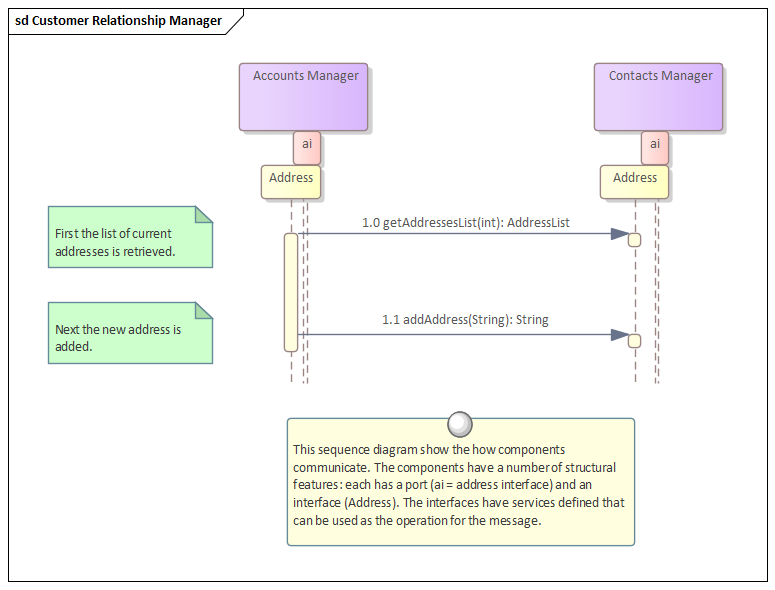

- #SEQUENCE DIAGRAM IN ENTERPRISE ARCHITECT FOR FREE#
- #SEQUENCE DIAGRAM IN ENTERPRISE ARCHITECT SOFTWARE#
#SEQUENCE DIAGRAM IN ENTERPRISE ARCHITECT FOR FREE#
Use this guide and create your own sequence diagram in UML for free with Lucidchart! for sequence diagrams Basic symbols and components Sequence diagram Lucidchart supports. Use cases can also be described with natural language, so-called scenarios, whereby These vertical or horizontal lanes symbolize the actor and guide the activities A Send Signal is an action used in a process to transmit asynchronous If the Message is a return message, in the Return Value field enter the returned Sequence diagrams depict work flow or activity over time using Messages passed from The Interaction pages of the Enterprise Architect UML Toolbox display. Use half-arrowed lines to represent asynchronous messages. Messages are arrows that represent communication between objects. However, in most scenarios, a single figure is not sufficient in describing the behavior of a system and both figures are required.When an object is busy executing a process or waiting for a reply message, use a thin gray rectangle placed vertically on its lifeline. Sequence diagrams, on the other hand, focus on the order of messages that flow between objects. Collaboration diagrams are used to visualize the structural organization of objects and their interactions. While both types use similar information, they display them in separate ways. In UML, the two types of interaction diagrams are collaboration and sequence diagrams. Additionally, collaboration diagrams typically exclude descriptive information, such as timing. As the number of objects and messages grows, a collaboration diagram can become difficult to read and use efficiently. However, collaboration diagrams are best suited to the portrayal of simple interactions among relatively small numbers of objects. Visualizing the complex logic behind an operation.Capturing the passage of information between objects.Demonstrating forward and reverse engineering.Exhibiting many alternative scenarios for the same use case.Providing an overview of collaborating objects within an object-oriented system.Modeling collaborations, mechanisms or the structural organization within a system design.A few examples of instances where collaboration diagrams might be helpful include: Components of a collaboration diagramĬollaboration diagrams should be used when the relationships among objects are crucial to display. After all objects are placed, links and messages should be added in between. The most important objects are placed in the center of the diagram, with all other participating objects branching off. These messages are communications between objects that convey information about the activity and can include the sequence number. messages- Messages between objects are shown as a labeled arrow placed near a link.Each link is an instance where messages can be sent. Links- Links connect objects with actors and are depicted using a solid line between two elements.Each actor has a name and a role, with one actor initiating the entire use case. Actors- Actors are instances that invoke the interaction in the diagram.If an object has a property or state that specifically influences the collaboration, this should also be noted. The naming label follows the convention of object name: class name. Objects- Objects are shown as rectangles with naming labels inside.The four major components of a collaboration diagram are: Notations of a collaboration diagramĪ collaboration diagram resembles a flowchart that portrays the roles, functionality and behavior of individual objects as well as the overall operation of the system in real time.
#SEQUENCE DIAGRAM IN ENTERPRISE ARCHITECT SOFTWARE#
Several vendors offer software for creating and editing collaboration diagrams. A model is then built using the relationships between those elements. These diagrams can be used to portray the dynamic behavior of a particular use case and define the role of each object.Ĭollaboration diagrams are created by first identifying the structural elements required to carry out the functionality of an interaction. A collaboration diagram, also known as a communication diagram, is an illustration of the relationships and interactions among software objects in the Unified Modeling Language ( UML).


 0 kommentar(er)
0 kommentar(er)
